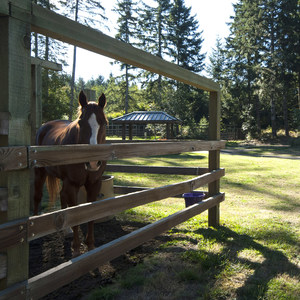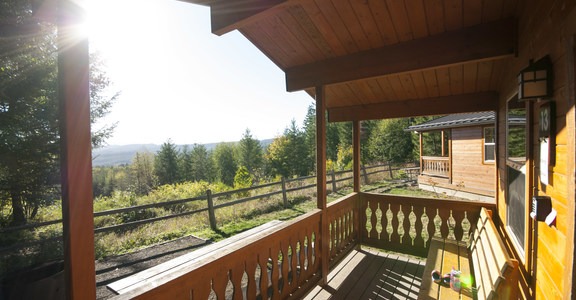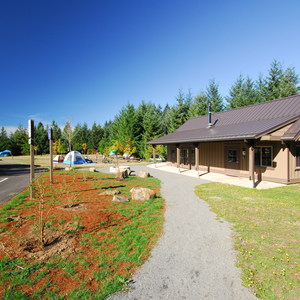Comprised of three parcels of land near Saddle Mountain west of Portland, Jewell Meadows is a roughly 3,000-acre wildlife area in the Fishhook, Beneke, and Humbug Creek valleys that provides a refuge for overwintering, migratory, and resident animals in the Coast Range. It is one of Oregon’s premier wildlife viewing areas, where visitors have the opportunity to view black-tailed deer, coyote, red-tailed hawks, and avian wildlife that includes a wide variety of songbirds, swallows, and the ever-majestic bald eagle.
Nonetheless, the wildlife area is best known for its herd of 200 Roosevelt elk, which are visible throughout the year and especially during the winter months, when the elk overwinter in the wildlife area. In order to better study the animal, Oregon Department of Fish and Wildlife officials also administer a supplemental feeding program that encourages the herd to stay in the area during that time. The feeding program, which takes place between December and February, consists of annual and decadal tilling and reseeding of the wildlife area’s meadows, a revitalization program that stimulates the growth of the Roosevelt elk’s main source of nutrition—grasses and forbs.
These delicious grasses provide prime Roosevelt elk viewing opportunities, and ODFW provides free wagon excursions in Jewell Meadows every day at 9 a.m. to capitalize on the close proximity of the distracted animals. The tours are available by reservation and fill up very fast. Beginning on December 1, call Jewell Meadows at 503.755.2264 to reserve a spot.
The best time to see the Roosevelt elk occurs between November and March, but this is not the only time the elk occupy Jewell Meadows. They are also commonly seen in the early morning and evening during April and October. They are also occasionally seen in the morning and evening during the summer months, but less reliably.
Seasons of particular importance occur during April, June, and between September and October. In April, the bulls shed their antlers. Around the first of June, new calves are born. The herd of 200 will typically produce about 80 to 100 calves. During the early fall months of September and October, the elk breed. The elk rut is a haunting time to be in the preserve, especially during night hours, when the high-pitched, whispery, and altogether chilling bugle resounds throughout the valley.
Throughout the year, Jewell Meadows is prime birdwatching habitat, including 40 species of songbirds, hooded mergansers, wood ducks, the Northern spotted owls, a threatened species.
Because Jewell Meadows is a protected wildlife area, vehicle and foot access is limited. Wildlife viewing areas are provided along Highway 202 in the Fishhawk Creek Tract near the eastern and western reaches of the wildlife area. There are also parking lots provided along Highway 202 at the park headquarters and at locations more central to the preserve. The Beneke Creek Tract just west of the Fishhawk Tract may offer access via Beneke Creek Road, but be aware of limited access or poor road conditions.
In all parts of the preserve, be aware of public signs prohibiting entry. There is no public access to the meadow. Dogs must be kept on leash at all times. Camping is available by permit in designated areas.

































Comments
Sign In and share them.